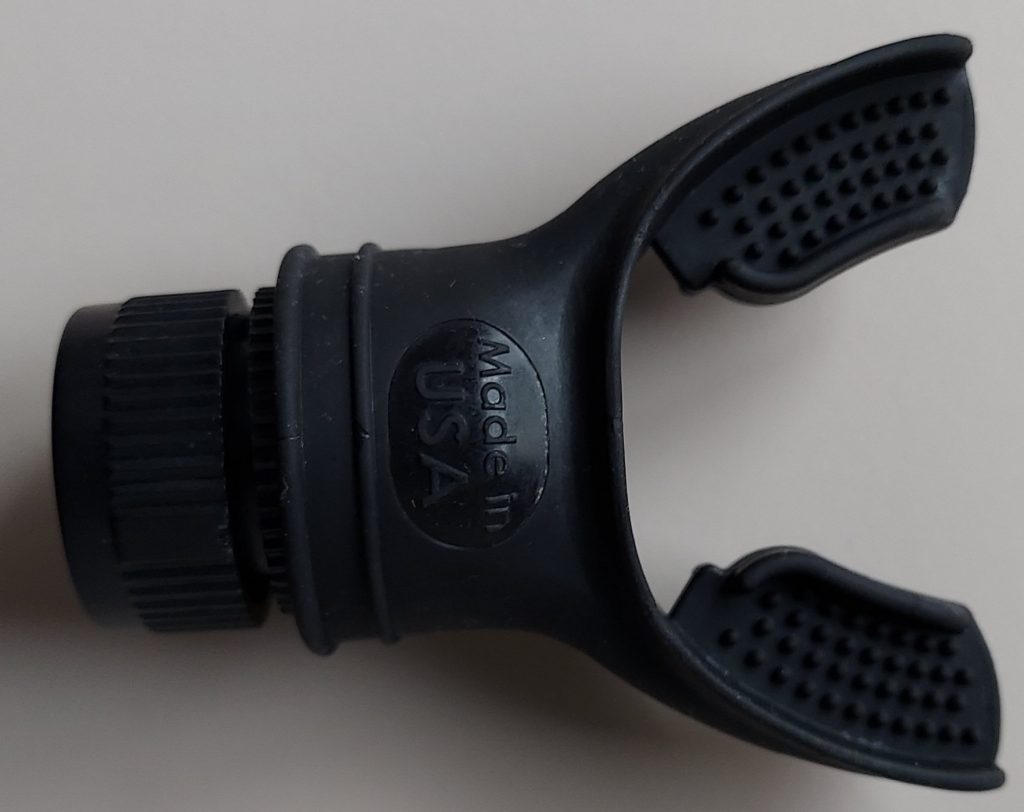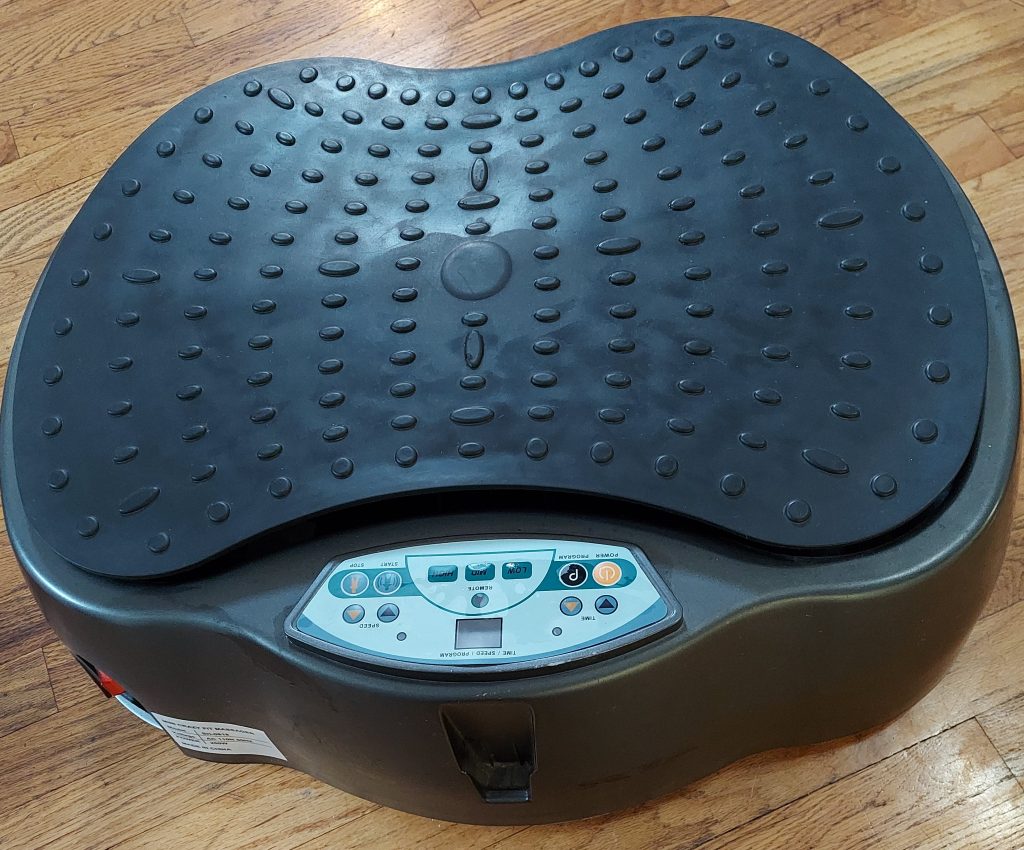Cardiovascular exercise basics, fitness data tracking, and high intensity interval training were covered in part 1. Breathing exercises, resistance training and measurement, and whole-body vibration devices are covered in this part 2.
Disclaimer – The views expressed in this blog belong solely to the author and do not provide health care advice. Always seek the advice of your physician or other qualified health provider with any questions you may have regarding a medical condition. The author is not affiliated in any way with the companies and devices mentioned in this blog.
- Breathing exercises
“All of your energy is coming from cells and cells only have energy when they get enough oxygen.”
Deep breathing is essential to deliver oxygen to the body. No exercise and shallow breathing will create lack of oxygen in our cells which can destroy the cells. There are several breathing exercises, but which is the right one?
In January’s sleep blog, I mentioned the importance in dialing down the nervous system and improving the vagal tone (autonomic system). Controlled breathing is one method to achieve improved vagal tone. You can indirectly stimulate the vagus nerve by taking deep, deliberate breaths from your belly. Deep breathing activates specific neurons that detect blood pressure. These neurons signal to the vagus nerve that blood pressure is becoming too high, and the vagus nerve in turn responds by lowering your heart rate. The vagus nerve sends an anti-inflammatory signal to other parts of the body. It’s all about body awareness and stopping and performing deep diaphragmatic breaths when stressed or anxious. Studies indicate that longer exhalations (4 to 8 breathing ratio) are an easy way to hack the vagus nerve, combat fight-or-flight stress responses, and improve HRV. Deep breathing has also been associated with making better decisions!
The video at this link provides instruction/stretches on good posture for improving deep breathing.
One recent study found that a breathing exercise program helped reduce fibromyalgia symptoms. This breathing program consisted of 30 minute sessions, 7 times per week for 12 weeks. The conclusion was:
“Our study demonstrated that breathing exercises produced relevant benefits on pain thresholds tolerance on tender points located in the upper half of the body, some of which predicted improvements in the impact of FM in the functional capacity to perform daily life, pain, and fatigue. These results provide further support of an idea that breathing exercises are a real and effective intervention to consider in women with FM. “ Tomas-Carus, et. al.
Yoga Pranayama, Tai Chi, and Qi Gong all have good techniques for breathing. These contemplative practices will be covered in a future blog.
As with muscle toning, there are resistance breathing devices that may help in building diaphragm muscles easier and quicker than without the device. Some of these devices are used for performance athletics (e.g., Expand-a-Lung) and other devices are used for people that have COPD or other respiratory illnesses, and others are meant to reduce anxiety (e.g., CalmiGo).
I decided to trial a device to strengthen the diaphragm muscles as a way to “hack” the time commitment as mentioned in this YouTube video.

Figure 1. Diaphragm Strengthening Device
After using a resistance breathing device for a week I found that my vagus watch showed an improvement of 10% for the breathing index and a vagus health index increase of 11%. HRV slightly declined during this time. I used a metronome to keep time for 4 count inhalations and 4 or 8 count exhalations. It’s important to start slowly as this device can also impact the muscles around the mouth and jaw.
In general, it feels like I am scuba diving with a regulator when using the device. I don’t really like using this device over deep breathing through the nose during meditation, yoga, or Qi Gong so I may use it once a week when doing resistance strengthening exercises.
The slightly lower HRV and higher vagal health index made me question, what is the better measurement for monitoring improvement? I searched for studies that evaluated heart rate variability for people with chronic pain or fibromyalgia. I found one study that evaluated autonomic dysfunction in fibromyalgia by measuring heart rate variability and severity of symptoms with breathing. Although the study was small it did not find a difference in HRV (SDNN) measurements compared to the control group, however, it did find that the ratio of SDNN/RMSSD (standard deviation in heart rate intervals/root mean square of sequential intervals ) did correlate to autonomic dysfunction. This ratio is thought to represent the balance of the sympathetic (e.g., accelerates heart rate, fight or flight) to the parasympathetic (e.g., slows the heart rate) nervous system activity. A higher value represents a shift to sympathetic which was found in the study for the patients with fibromyalgia. The study conclusion was:
“SDNN/RMSSD is a valuable parameter for autonomic nervous system function and can be used to quantify subjective autonomic symptoms in patients with fibromyalgia.” Kang, et al.
The vagus health watch I mentioned in January’s blog on sleep gives an indicator of vagus health. This is a proprietary algorithm so I don’t know if this indicator is aligned with the ratio. I haven’t found a device yet that reportedly measures this ratio, but this could potentially be a good metric for those with chronic pain or fibromyalgia for determining the impact of various wellness activities.
- Resistance Training and Measurement Devices
Strength training is important to overall well-being, prevention of injuries to joints, regulation of glucose and weight management, and to maintain bone strength. It is important to work with a fitness instructor when using equipment in a gym or with free weights to ensure proper alignment to avoid injury. Resistance training has proven to be beneficial for chronic pain and fibromyalgia.
“Person-centered progressive resistance exercise was found to be a feasible mode of exercise for women with FM, improving muscle strength, health status, and current pain intensity when assessed immediately after the intervention.” Larsson, et. al.
To determine the right level of resistance or muscle tension, it would be helpful to have data rather than just subjective observation of muscle fatigue. It can be hard to level set the exertion when you have chronic pain or fibromyalgia as muscle abnormalities may already exist that result in weakness, fatigue, and muscle pain. As the muscles are exercised, an increase in heart rate provides increased blood flow. However, there is a level where the increased blood supply can no longer keep up with the oxygen demand within the muscle which results in lower muscle oxygen saturation (Sm02) levels. Lactic acid is produced and accumulated when there is not enough oxygen in the blood. This is why monitoring oxygen in the blood at the muscle of interest could be useful in moderating the exercise. Another approach could be direct measurement of muscle activity using an electromyography (EMG) sensor.
Unfortunately most of the wearable sensors for monitoring the internal and external workload of the athlete are still fairly expensive for the general public.
A recent study evaluated two wearable devices that measure blood oxygen levels, the Humon Hex and Moxy Monitor. The Moxy Monitor can be strapped on the leg for example to measure the local oxygen levels similar to the finger pulse oximeters available on the market. The Moxy monitor costs $800 which is more than I would like to pay. The Humon Hex was more reasonably priced, but it recently went out of business.
With advancements in smart textiles and component miniaturization, Athos provides integrated EMG measurement into compression apparel. The EMG signals are acquired by a portable device that clips into the apparel. The sensors are integrated into the textile. The EMG measurements indicate the muscle activity during exercise, and can identify if you are favoring one side over the other (such as using the right side more than the left for picking up a barbell) The cost of a shirt or shorts ranges from $350 to $400 each with the core module and the cost of additional textiles only is around $150. I think this technology is great if you are an athlete looking to optimize peak performance, but not likely something I will buy at this price point.
In my search for smart textiles, I found another company of interest that makes apparel that reportedly relaxes the muscles. Intelligent threads use advanced proprietary technology to allow the material to conform to each unique body, releasing muscles in order to achieve the proper alignment that leads to better blood flow, along with improved range of motion and overall well-being. The apparel is made of dryfit PosiCharge technology polyester material to keep you dry when sweating and allows the shirt to be breathable. The company infuses Myo-Equilibration (Myo-E) technology into the fibers of the material to help bring balance to the myofascial network. They mention it relieves soreness, pain, and bad posture for better performance at work, home, or on the go. Sounds too good to be true? They do post a disclaimer that intelligent threads will not treat, cure or heal anything. Check out the videos below on it. The apparel is pricey at $300 for a shirt, but after watching the videos, I just have to try it….
https://www.youtube.com/watch?v=odTE4QGVusg
I really enjoyed watching this video:
https://www.youtube.com/watch?v=fK9joWERzEo

Figure 2. Intelligent Threads Shirt Logo
I received my shirt in time to trial it once before posting the blog. When I put it on, I felt a slight effect. To test the effect, I used the Oura ring to measure my recovery the night after the exercise. In general, I find that my recovery is worse (lower HRV, and heart rate) after resistance strength training. After my general routine it seemed to be better from wearing the shirt, so I decided to really go for it and did a high intensity strength training workout that I knew would have repercussions afterward. Although my heart rate lowered later in the night, it was a generally good recovery overall with higher HRV and lower heart rate than what would usually occur. I did feel a little sore and tired the next day, but not at the level I would have without wearing the shirt during and after the workout. Although this is only one subjective trial, I think there is a slight beneficial effect, especially if you want to work out with higher intensity and not end up in a flare. How does it work? My guess is it is probably a “pseudo” capacitor effect, with conductive polymer fibers that move the ions around in the muscles to achieve the myo-equilibration they mention in their videos. The fibers are also probably woven in an orientation that improves this effect for the muscles. This will help reduce the impedance (resistance) in the muscle fibers allowing improved circulation and better recovery. This is only my hypothesis as they don’t discuss the specifics of the technology, but it would make sense.
- Whole-body Vibration Devices
Whole-body vibration training can offer some overall health benefits, but there has not been substantial studies in this area. Some research indicates that whole-body vibration can reduce back pain, minimize bone loss, and help with balance.
Full body vibration machines were discussed on the TV show, The Doctors, at the link below.
https://www.youtube.com/watch?v=dHkxfwVUq2Y
There are several whole-body devices available on the market and product reviews. I bought one a few years ago and find it useful after a day of sitting at a desk, to just stand on. It just feels refreshing afterwards and my circulation is improved with tingling in my legs. Using a whole-body vibration machine could be a good way to gently develop into a resistance based exercise program. Whole body vibration machines run from $100 to $300 on Amazon.com.

Figure 3. Whole Body Vibration Machine
There have been multiple studies on using whole body vibration for fibromyalgia. One paper reviewed these studies with the following conclusion.
“Whole-body vibration could be an adequate treatment for fibromyalgia as a main therapy or added to a physical exercise programme as it could improve balance, disability index, health-related quality of life, fatigue, and pain. However, this conclusion must be treated with caution because the paucity of trials and the marked differences between existing trials in terms of protocol, intervention, and measurement tools hampered the comparison of the trials.” Collado-Mateo, et. al.
In general some researchers caution the use of these machines as there hasn’t been significant research done looking at settings and possible cartilage and joint damage. Please check with your doctor before performing a whole body vibration exercise routine.
Rebounding on a mini-trampoline is also another inexpensive way to achieve improved whole-body circulation and lymphatic improvement.
Next month I will focus on mind/body wellness therapies. Please bookmark this site!




Hi there just wanted to give you a quick heads up and let you know
a few of the pictures aren’t loading correctly. I’m
not sure why but I think its a linking issue. I’ve tried it in two
different web browsers and both show the same outcome.
Thank you for the information. We were not able to duplicate the issue, so hopefully it has since been resolved on your browser. We recommend the Chrome browser for best results.